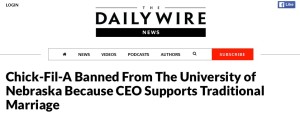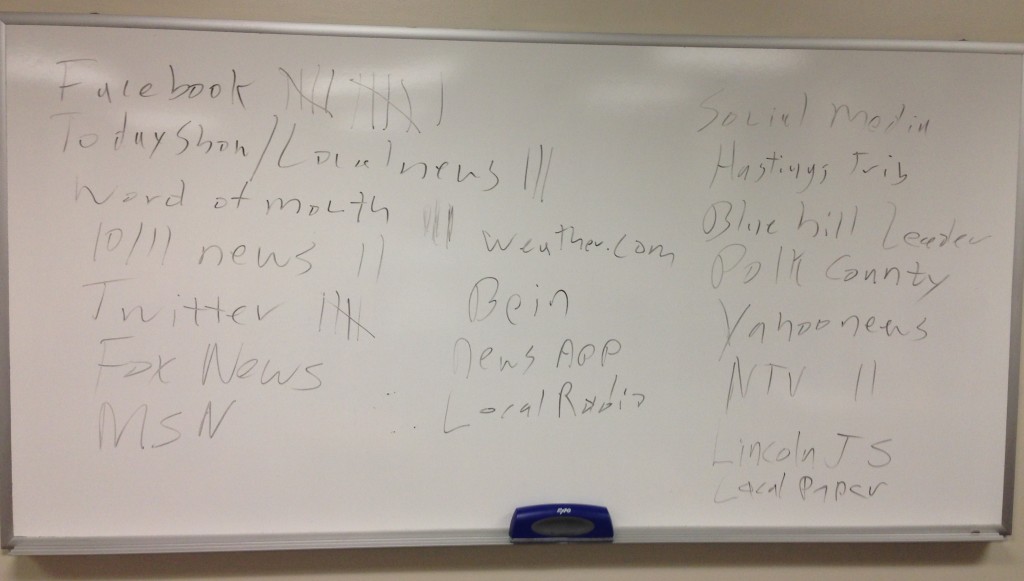Felix Kjellberg is the most famous person on the planet you’ve never heard of. At least if you are older than 40 and don’t have young people in the house. Kjellberg is the first person in YouTube history to have more than 10 billion views. Yes, that’s billion with a b. He’s had more views than Psy with his K-pop Gangnam Style, more views than Justin Bieber, more views than Kanye and Kim.
Name not ringing a bell? Perhaps because he goes online by the handle PewDiePie. He’s a twenty-something from Sweden who is known for his video game play-with-me videos that have him laughing, screaming, and cowering in fear during the scary parts of video games.
NOTE: NSFW language in video
Kjellberg started out as a student at a prestigious Swedish university, but he left school to sell hot dogs and make gaming videos. Needless to say, his parents were not initially excited about his choice. What initially drew viewers was what Rolling Stone called his “legendary cowardice” displayed through “screaming, running and cursing at the first sign of danger” while playing through horror games. Once he started attracting audiences that numbered in the tens of thousands, however, his parents relented and accepted that he might be onto something.
Where does his online name come from? Pew – that’s the sound laser guns make in video games (Pew, pew, pew!). Die – that’s what happens to you when you are hit by a laser blast going “pew, pew pew” in a video game. And Pie, because… well, I got nothing. (In case you didn’t already know – PewDiePie rhymes all the way through with “cutie pie.)
Caitlin Dewey, writing for the Washington Post, says that authenticity is what seems to set Kjellberg apart from other YouTube stars. “He comes across as 100-percent authentic. Watching a PewDiePie video is like listening to a friend; not a super witty or insightful friend, generally, but a friend who is consistently fun to hang out with.”
“YouTube breaks the barrier between the audience and the creator,” Kjellberg told the entertainment industry journal Variety. “They feel a connection to the one they’re watching.” Fridays with PewDiePie videos are full of antics and game plays that are requested by fans – much as radio stations used to take requests. His fans are known as the Bros and his signoff is the display of the brofist.
In addition to being a YouTube sensation, Kjellberg is a popular guest on conventional TV, having played video games with Conan O’Brien and chatted with the Late Show’s Stephen Colbert. Unlike some other TV hosts, Colbert recognizes the importance of YouTube stars, joking during the interview “I want to thank the internet for allowing their emperor to be here for the evening.” Kjellberg has also authored the bestselling This Book Loves You, a collection of parodies of inspirational quotes.
While Kjellberg has been mocked by critics, he says he’s clearly doing something people like. “It seems silly,” Kjellberg tells Rolling Stone. “Your job is to play games? You make money from that? It’s ridiculous. But the more you know about it, and the more you get to know me, the more you understand that it’s actually a hard thing to do, and not a lot of people would be able to do it.” Kjellberg reportedly earned $12 million in 2015.
People watching other people play video games is one of the fastest growing trends in media use. According to a 2015 study, approximately 30 percent of American adults sometimes or frequently watch videos or live streams of video game content. Back in 2014, thousands of people would watch a fish named Grayson “play” Pokemon, triggering actions by swimming through different sections of his tank. At the same time, Amazon paid almost $1 billion to buy video game video streaming service Twitch. While Twitch gets referred to as “gamer’s ESPN,” it might actually be the other way around – because Twitch attracts a far bigger audience than ESPN – As many as 100 million viewers per month watching an average of more than 90 minutes of gameplay per day. Twitch’s web site attracts viewership approaching that of Google, Netflix, Google and Apple.
Kjellberg now is creating a multichannel YouTube network in association with Disney’s Maker Studios. PewDiePie will be pooling efforts with a number of other social media stars including CutiePieMarzia, Kwebbelkp, and EmmaBlackery. In addition to creating content and drawing in advertising, the new network, Revelmode, will also work at rasing money for social causes such as Save the Children and Charity: Water. AdWeek has compared Kjellberg with radio shock jock Howard Stern, who created his own satellite radio networks after he left doing a popular broadcast radio.
It can be difficult figuring out how YouTube fits in with broadcast, satellite/cable, and the streaming services when it comes to video programing, but the Television Academy, which hands out the Emmy Awards, has now created several classes of awards for short form videos, like those PewDiePie produces. To be eligible, the series needs to have at least six episodes that average under 15 minutes each. Previously, short-form online videos were eligible for fan-voted Webby or Streamy awards.
“These category changes reflect the boarder opportunities that emerging networks and distribution platforms, such as Maker Studios, Fullscreen, Crackle, AwesomenessTV, YouTube Red, Adult Swim and others, are seizing in choosing innovative formats that enable our television community to share stories in novel and entertaining ways,” said TV Academy chairman and CEO Bruce Rosenblum.
Creators like PewDiePie are a central part of a rapidly changing media world. He connects directly with his fans through social media, he sends out most of his programming through new channels like YouTube but still uses legacy media like television and books, and he connects on a global level. PewDiePie started as an independent video performer and he now works with one of the biggest media corporations in the world.



 My friend
My friend 